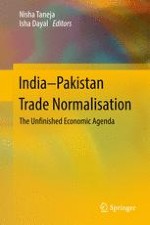2017 | OriginalPaper | Buchkapitel
5. India–Pakistan Trade: Perspectives from the Automobile Sector in Pakistan
verfasst von : Vaqar Ahmed, Samavia Batool
Erschienen in: India-Pakistan Trade Normalisation
Verlag: Springer Singapore
Aktivieren Sie unsere intelligente Suche, um passende Fachinhalte oder Patente zu finden.
Wählen Sie Textabschnitte aus um mit Künstlicher Intelligenz passenden Patente zu finden. powered by
Markieren Sie Textabschnitte, um KI-gestützt weitere passende Inhalte zu finden. powered by
